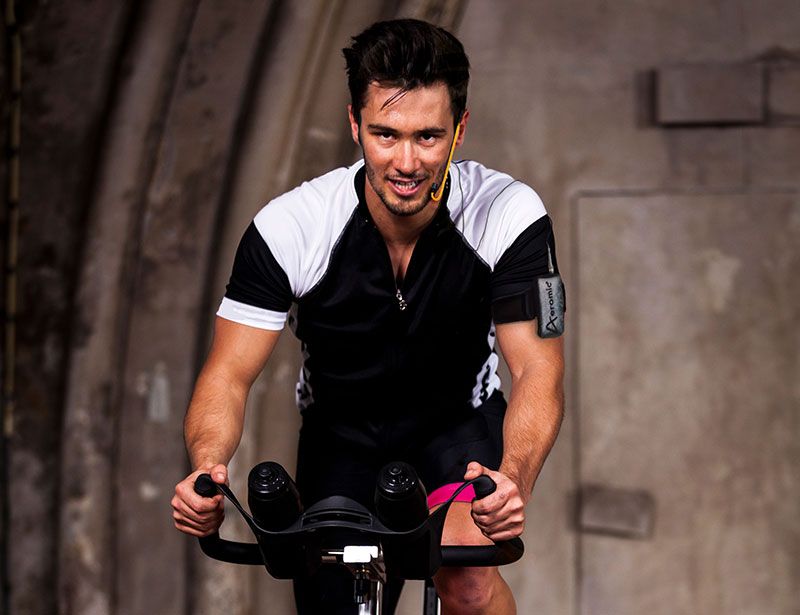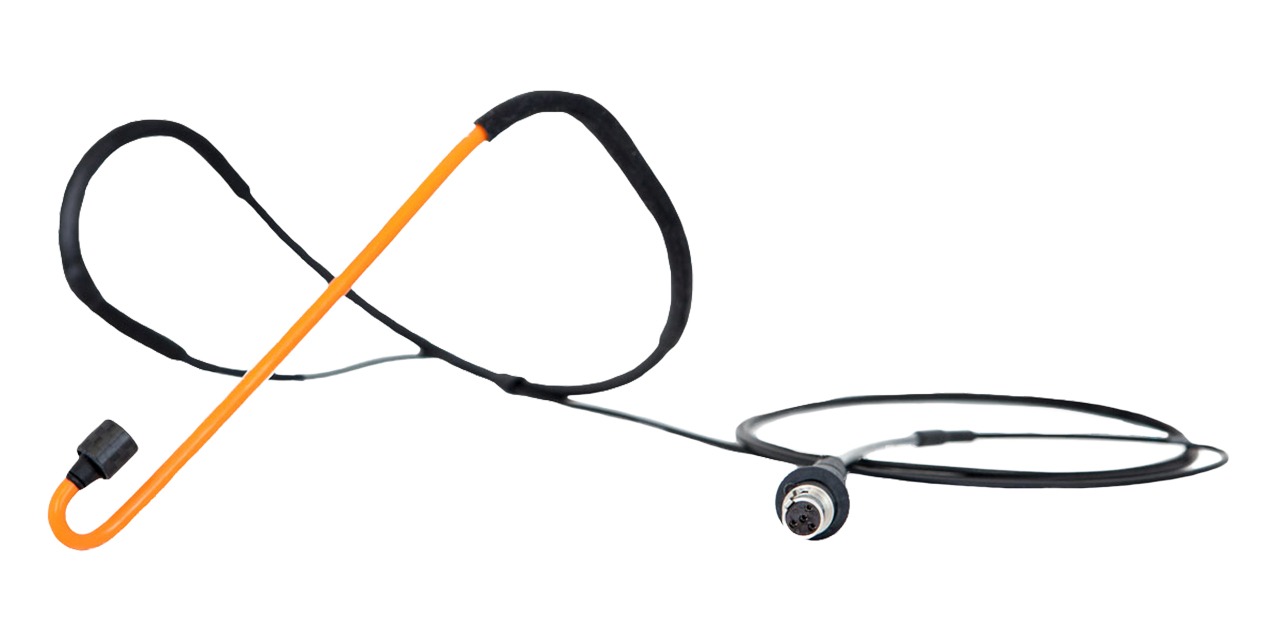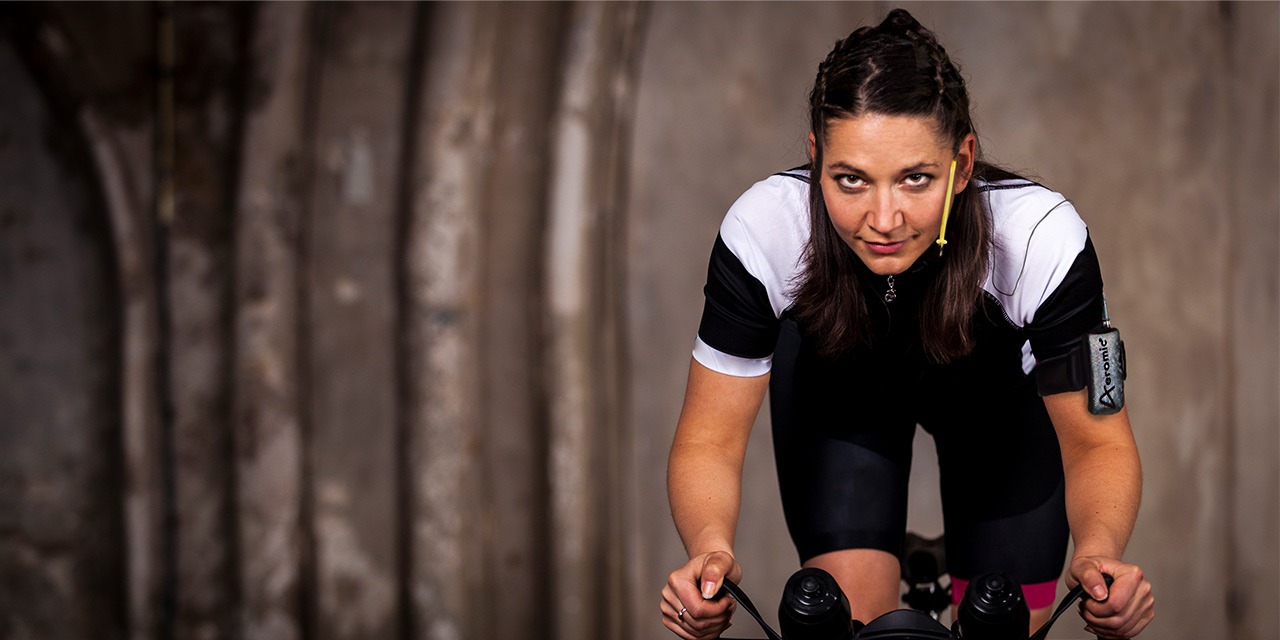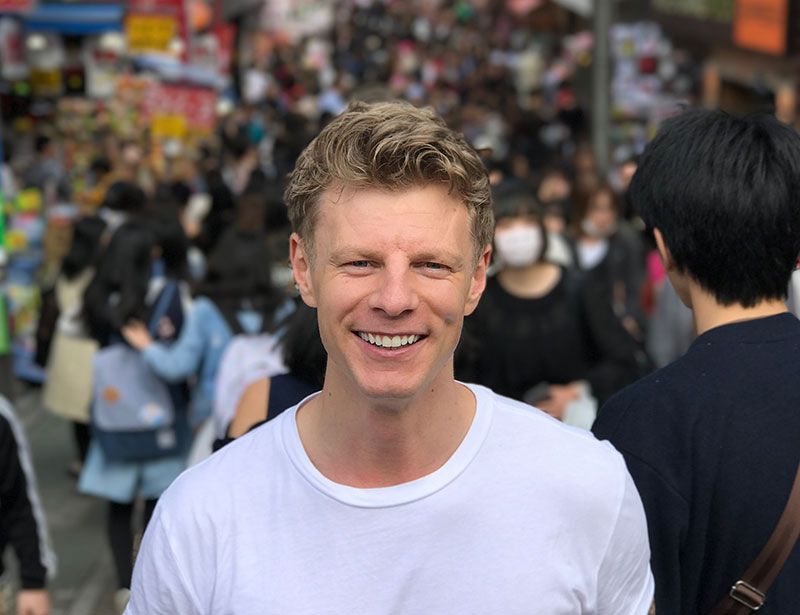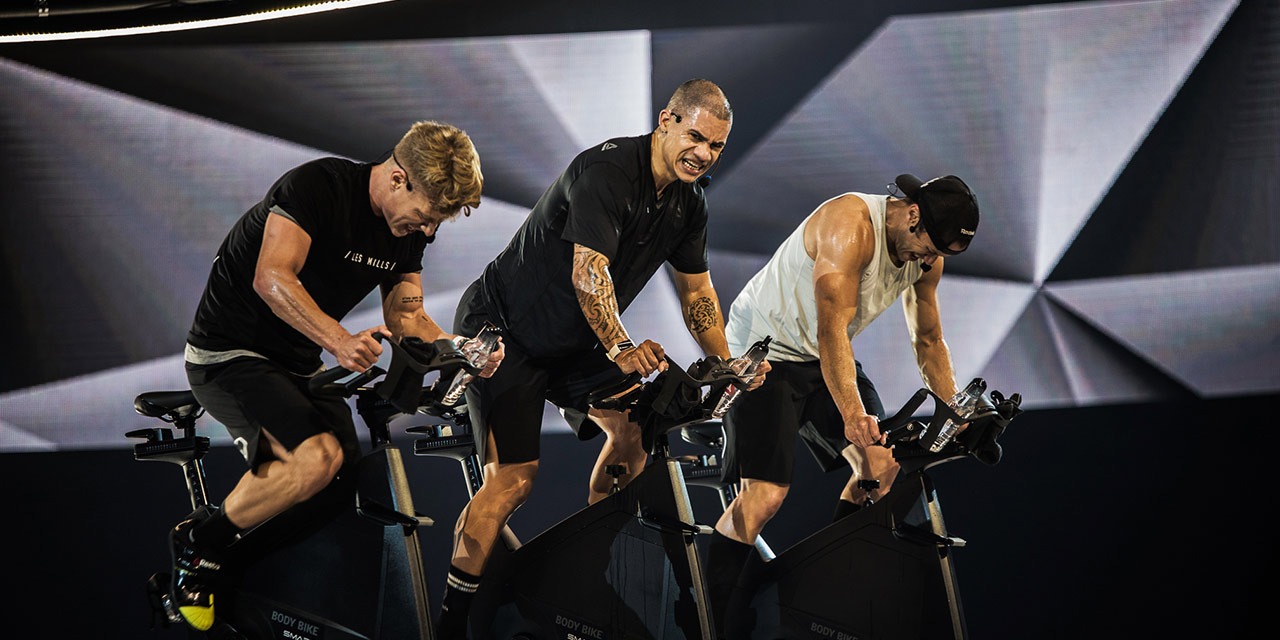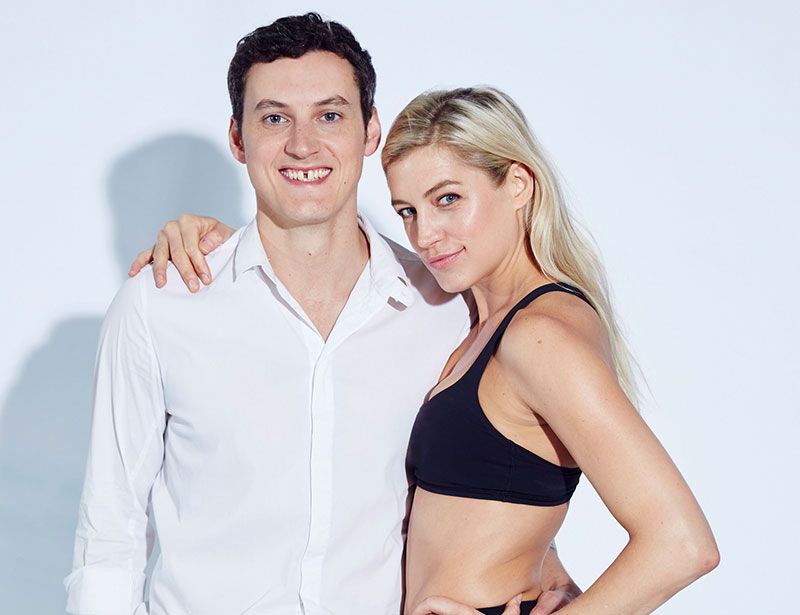Steamy spinning class, no sweat!
Bad Combo
Sweat is not just “body water”, sweat is toxic. You can see what sweat does to low cost bikes. Rust spots happen and paint peels off after at around 6 months in a busy studio. So please consider that sweat can affect the headmic and wireless transmitter. The question you need to answer is – Is it “fit for purpose”? This is where big name general purpose mic systems fail.
Cyclemic versus sweat
It is the reason why we decided to tackle sweat head on when creating the Cyclemic. It’s also the reason why we also added a sweat protection coating to the Fitness Audio bodypack and mini transmitters.
Protection is everything
The Cyclemic uses a capsule made with marine grade stainless steel. We protect it with a double mesh arrangement that causes sweat and spit to form droplets big enough to fall off. Further protected by a blast proof carbon fibre collar, moisture does not penetrate the mesh. We also paint the circuit board inside the Fitness Audio transmitters with a special anti-corrosion lacquer. This gives protection from irreversible sweat corrosion for all the components inside. These processes are unique in the microphone world.
The Show must go on
So, these are the “tools of trade” that we can supply to all fitness club studios anywhere. They mean the show goes on for longer with less chance of downtime. You can expect over 2 years of daily use without sweat damage problems occurring.
LOUD or Silent system
The current thinking for Cycling Studio Sound Systems is one or the other – LOUD! or “silent” and we can help with both (LOUD is sound through speakers, whereas the silent system is through earbuds, but more on that further down). On the LOUD side we recommend using, depending on the size of the studio, powered or active loudspeakers. The manufacturer matches powerful amplifiers to the speakers inside the box. This process will give you the best sound and longevity because they have built-in protection circuits.
“Happy instructors make members happy too – it’s contagious!!”
Audio all over the place
In Sydney, Australia we are supplying a new chain of cycling clubs with 4 x 10” (25cm) 2-way, 400w powered speakers from Italian brand db Technologies. There’s also a 15” (37cm) 600w powered subwoofer to complete this impressive system for a 30-bike studio. There is enough power available that the sound is what I would call “comfortably loud”. The system delivers an exciting, motivating sound for the classes. We supplied a control unit after our Aeromix 2+2 Mixer, they are known as a DSP unit, (Digital Sound Processor).
This, when set up by our trained technician, will ensure the sound is as good as it is ever going to be. Mic feedback, if it ever was an issue, gets eliminated. We equalise the speakers to the room, we can control the loudness levels too. It’s a great investment in getting everything working together for the greater good.
We recommend using a 2 speaker set up for a room with up to 20 bikes (sub-woofer optional). We use 4 speakers in a horseshoe arrangement facing the back wall when there are 20-40 bikes (again a sub-woofer is available if the budget allows).
Sound of Silence
Now let me tell you about our silent class systems. We have an electronics package comprising of a Fitness Audio Mini Mixer, a wireless receiver with our Cyclemic and transmitter, our Bluetooth® receiver and an AppAudio® Solo unit that we combine with an Access Point (ie a WiFi Transmitter). No speakers!
Everybody AppAudio®
The instructors use their smartphone with earbuds to check their voice and music levels. The class music comes from a tablet or iPod® via the Bluetooth® receiver. The mixer connects to the AppAudio Solo and then its cabled to the AP mounted on the ceiling. The instructor and class members have downloaded and installed the free AppAudio App on their smartphones.
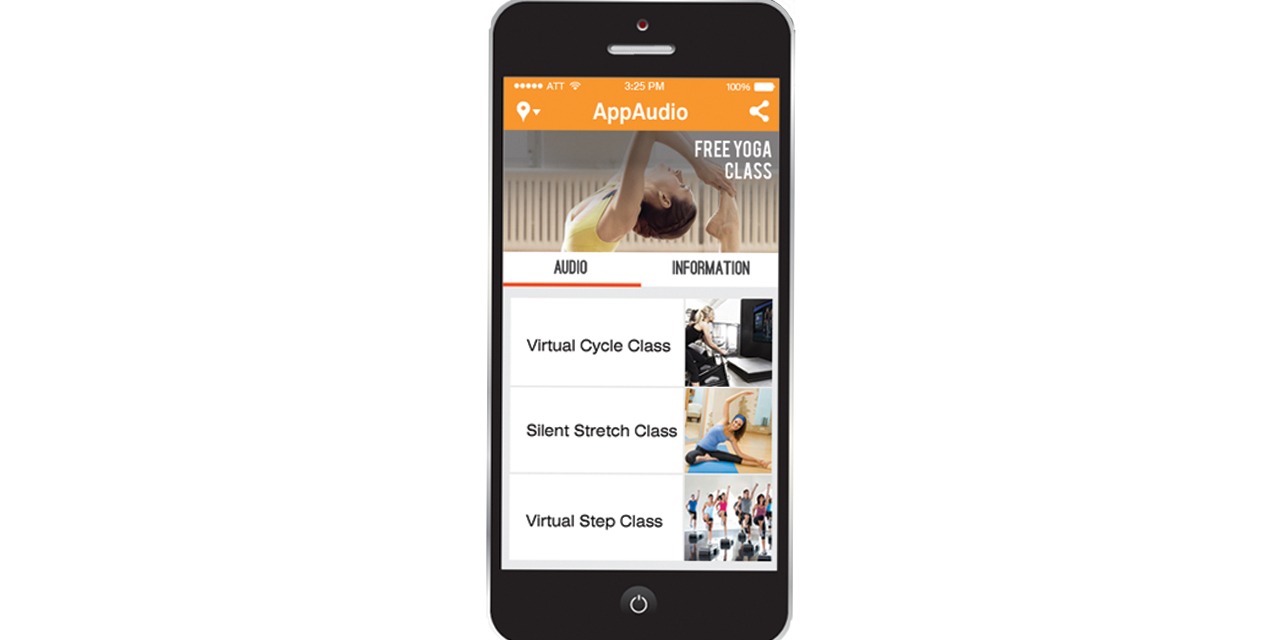
They now tune in wearing their earbuds. This system is becoming popular in open layout gyms where a dozen cycles are set out inside a shared area. We also offer this solution to those Muslim countries or clubs where playing loud RPM class music is culturally unacceptable. In audio there is always a way to reach people who want to work out to music in the ears!
Listen up!
I knew a wise club owner from Perth, Western Australia (now a retired millionaire!) who always said his club success formula included getting the sound system and mics right in the studios. Everyone is happy if the sound is good. The instructor is happy because they enjoy giving their classes. The members are happy because the instructor gives great classes with that sound system and mic.
Members keep coming back and will stay members – all because the owner did it right first time. It’s hard to argue against that. Happy instructors make members happy too – it’s contagious!! Yet there will always be club owners that just won’t spend the money to do it right. One thing is certain – clubs with unhappy instructors will lose members. Those who don’t stay hooked on your cycling classes will start looking around for a better experience.
Bas Hollander
Millennials, like me, also call this a bucket list, or just a list, or sometimes just ‘yeah whatever’. Some write it down. Some brag about it on social media. Some don’t. The things on my list mostly tie in to traveling. Seeing something of the world. Helping people by being active. And of course, some gadgets (drones, fast cars, electric skateboards), I love my gadgets.
In the last few years I’ve been very lucky: I got the chance to travel the world and to present at the big events of Les Mills Live, meeting the coolest people.
There was just one thing on that list that I couldn’t tick off. It was just sitting there, slowly moving to the top as the others were ticked: Living in another country for a longer period.
But that was about to change early 2017. I was asked to work as a Training Manager for Les Mills Japan… Meaning that I would live in another country for a minimum of 2 years. And about to be able to tick off another goal on my bucket list.
Cultural challenges
So, I resigned from one of the coolest jobs in Holland, packed up my stuff, got on a plane, chasing the adventure…
I landed in Japan and immediately fell in love with the culture. The people here are very friendly and polite. They take care of each other and are hard workers! But not everything was great right from the beginning. Setting up a new life in another country is always challenging, but setting it up in Japan might be even more challenging. The country is not as used to foreigners as other countries are. I’ve heard that only 6% of the population speaks English. And there are so many rules here. Rules for everything. Way too many rules if you ask me. Settling in and working your way through these rules is big when you first come here.

But after 6 months of being here I can say that it is so cool to be here. Working for Les Mills Japan is great! We are a small team (around 20 people), and we are in our start-up phase. Which means that whatever we do now shapes our future significantly. I’m in charge of all the Trainers. The Trainers educate and train the Instructors that teach all our Les Mills classes in gyms. When I started 6 months ago we had 12 Trainers. Now we have 60! I’m trying my best to help them as much as I can so they can be the best they can be!
Teaching in Japan
In Japan people speak Japanese. Only a few speak English as well. And it’s not like it is in Holland (where I’m from) where almost everybody at least understands English even if they are not able to speak it. I’m learning how to speak Japanese but because the company is at its early stages there is so much work to do that my Japanese practice often is the first thing to disappear from my to-do list.
So I’m not teaching classes as often as in Holland. I teach when clubs invite me to teach. Which is kind of nice because I have more time to focus on my own trainings. And it makes me look forward to all the classes that I’m teaching as there are only a few every month.
“In this young- kid-handwriting that you have when you are 8, I wrote: ‘One day I wanna live in Japan’.”
A club in Shibuya (one of the coolest places in Tokyo) has a Les Mills Immersive Studio where I can teach Les Mills THE TRIP and SPRINT. They love it here!
Cool stuff coming up
We have big plans for Les Mills Japan. We want to be in more clubs throughout Japan to be able to reach more consumers and influence their lives in a positive way. My main focus here is to create a really strong team that meets all the international standards when it comes to Training and Presenting.
Besides my work here in Japan I will also keep going to Auckland to help film GRIT, THE TRIP, SPRINT and BORN TO MOVE.
Why Japan?
In the 2 weeks before I left I was cleaning up my house, putting everything in boxes. I stumbled across a primary school project that I made when I was maybe 8 or 9 that I totally forgot about. In big letters, it said
“JAPAN” on the front.
I used to practice judo, so from an early age I was fascinated by Japan because that’s where judo is from. I skimmed through the project, and then I found something interesting. In this young-kid-handwriting that you have when you are 8, I wrote: ‘One day I wanna live in Japan’.
Happy to say that that is what is happening now. Goal on the bucket list: CHECK!
Business is Boom-ing
What’s your background, and how did this lead you to set up Boom Cycle?
Hilary: After leaving university, I worked as a fashion model for 15 years across New York, London, Paris, Los Angeles and mainland Europe. I used studio cycling as a way to stay in shape (I still do!) – but more than that, I loved the feeling of just spending 45 minutes dancing to good tunes. Because that’s what it felt like: as if I were dancing on a bike in a nightclub. The endorphin kick was always a way to feel great – a definite mood-improver.
When I moved to London, I couldn’t find anything that compared to the indoor cycling classes I’d previously experienced in New York, so I set about creating my own. That led to me launching Boom Cycle with Robert – then my boyfriend, now my husband – in 2011.
Robert: I’d worked in the alcohol/drinks industry for around five years before co-founding Boom Cycle. A different industry for sure, but we were growing a small business and the hours certainly trained me well for owning my own business, which had always been my goal.
What was your objective when you started out?
Hilary: I was initially viewing Boom Cycle as a hobby, but the more Robert and I looked into it, the more we realised there was a real opportunity to create something that was missing in the UK.
We therefore decided to co-found the company with a much bigger vision: to create indoor cycling studios across the UK offering classes that made fitness fun – no longer a chore that people had to tick off their to-do list, but rather something they looked forward to as the highlight of their day.
Robert: We sold our house to build our first studio, which opened in 2011 in a little basement space on a backstreet in Shoreditch, east London. It was close to where we lived, a cool area and the rent was cheap.
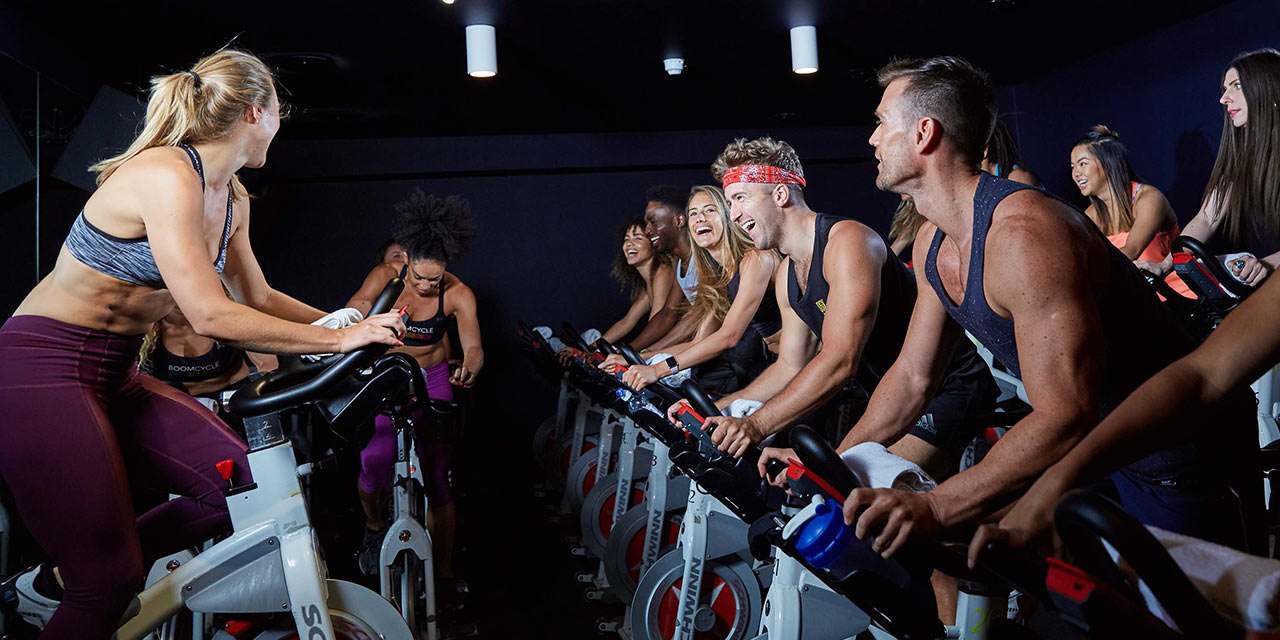
What makes Boom Cycle special?
Hilary: Boom Cycle is inclusive and empowering. We don’t use any sort of numbers or measurement. There’s no element of competition.
We provide an experience in which people can lose themselves and let their minds go. It’s like a very loud meditation and big party all rolled up into one!
Robert: As Hilary says, it’s all about empowering our riders. By making our workouts fun and accessible, and training our front-of-house hosts properly, we create a space where everyone feels welcome, so there’s no pressure and no intimidation – just lots of smiles and high fives.
With one-off rides starting at £18 – going up to £300 for 20 rides, or an unlimited package for £125 a month – we realise it isn’t the cheapest way to exercise. It’s therefore especially important to recognise not only that it’s a treat for some people, but that all consumers want to feel valued when they’re spending their very hard-earned money.
Who’s your target market?
Hilary: Anyone at all! Seriously, our riders range from 14 to 83 years old and come from all backgrounds. We do find the majority tend to be millennial women, but our customer base is very diverse.
What’s the design philosophy at your studios?
Robert: We want the space to feel comfortable and not too polished: we always keep it a bit rough around the edges. In addition, we always take the external environment into account – it is this that always leads the brief.
Interior design of our studios is by W&D Design (wandd.co.uk), which is headed up by Thomas Rowland.
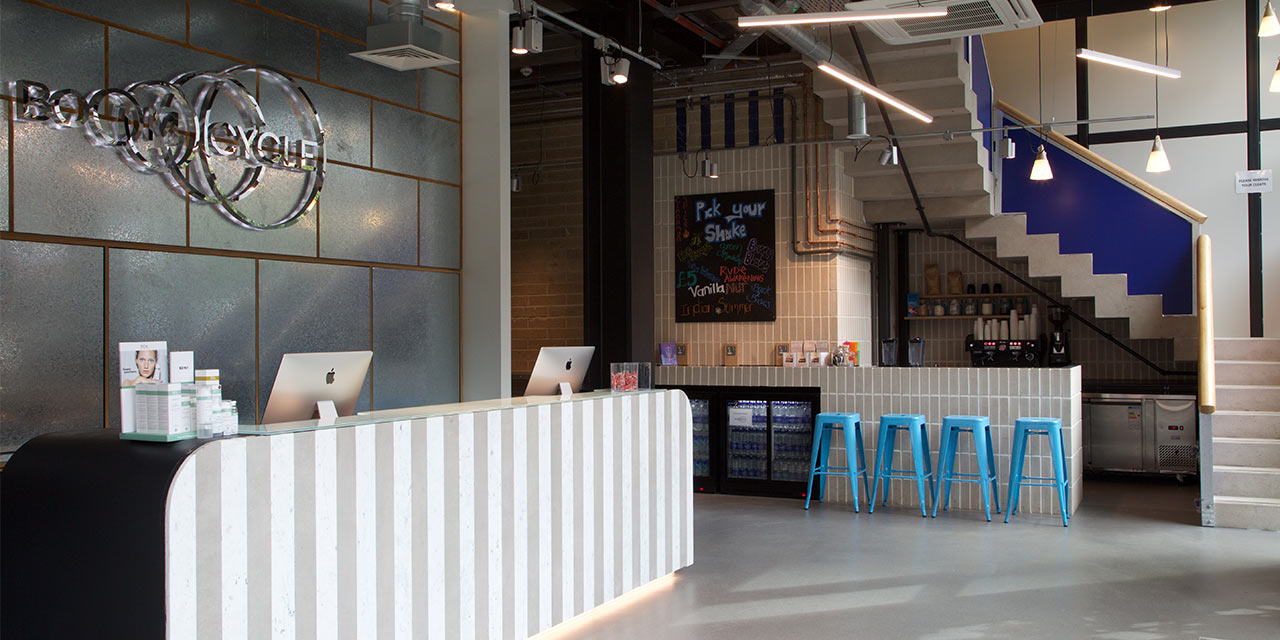
You were an early mover in the boutique sector. How receptive were consumers to this new model?
Robert: Tough to say across the whole of London, but in Shoreditch there was a lot of educating the market that had to be done. Most people really didn’t get the concept of paying per class and pre-buying rides upfront.
In addition, we found a lot of people were comparing the cost of our classes to traditional gym memberships, even though the experience was very different.
However, it was very well received. We just had to provide a lot of guidance and education and build the business up over a few months.
How has your business developed over time?
Robert: Off the back of the success of our first studio, we secured investment to open more Boom Cycle locations. Today, we have four standalone studios in London – in Shoreditch, Holborn, Hammersmith and Battersea – and one pop-up residency.
The way we go about things, the brand, the look and feel and marketing have all adapted over time as our business has grown, but our vision of what we’re all about and where we want to be has remained constant.
How do you market the studios?
Robert: We view ourselves as a lifestyle brand, so our marketing follows that vision: we spend a lot of time working on engaging with our customers and building the Boom Cycle community. After all, the best marketing you could ever get comes from your existing riders via word-of-mouth.
What do you look for when hiring instructors?
Hilary: We look for people who have the thing you can’t teach: the X factor, charisma and connectivity that you either have or you don’t. They must also have rhythm, enthusiasm and more energy than anyone else in the room. We’ll teach them the rest.
It’s easier than it used to be to find good instructors, now our brand has grown, but it still isn’t easy. We hold auditions to find ours, and at the most we might take three instructors from one audition – but sometimes we take none.
What do you expect from your instructors?
Hilary: Many of them will have multiple roles, but at the very heart of it, their role is to be an ambassador for Boom Cycle – to preach our vision, standing in front of the congregation each day to deliver our message. We would therefore wholeheartedly say they do much more than just lead classes.
When it comes to classes, though, they all follow our programme – but they choose their own music.
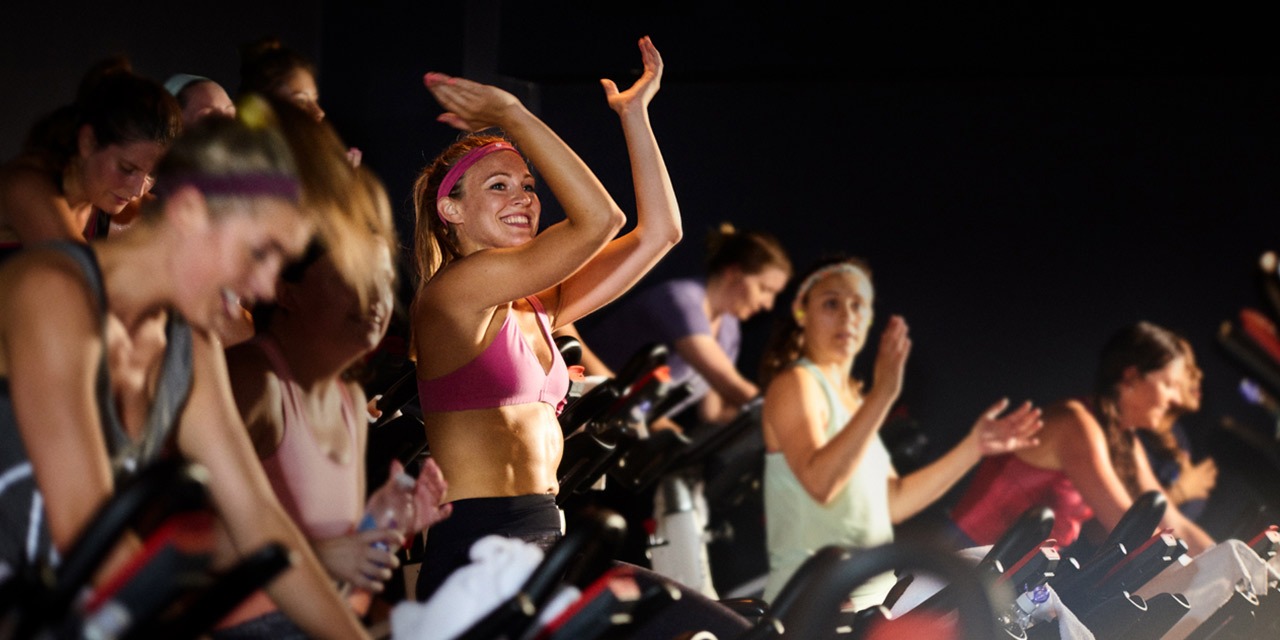
How many studios do you think you’ll open in London, and over what timeframe?
Robert: We do plan to open more, but how many and when is truly impossible to say.
Before we think about opening new studios, we need to make sure our existing sites are working well – that we’re delivering the Boom Cycle vision every ride, every day, every studio. It’s what our riders expect and deserve. So for the next few months, we’re focusing on getting our new sites in Hammersmith and Battersea up and running – they opened this summer.
Will you go to other cities in the UK, or even overseas?
Robert: We’d love to, when the time is right and if the location has the right demographic, footfall and rents.
What would you say is the secret of your success?
Robert: I think having a clear and very consistent understanding of what we’re trying to achieve has been a big help to us. That and never giving up!
What we do is also very much in line with what people in London want. London is a hectic, stressful (but amazing) city. It’s all about the hustle and bustle – so people love those 45 minutes of escapism with us, when they can just get down and boogie.
“we look for PEOPLE who have THE THING you can’t teach”
What’s the main trend in indoor cycling in London at the moment?
Robert: People are trying various avenues, from the ‘party on a bike’ approach to performance and data tracking. I don’t think it’s clear yet which will be the most popular – if one will emerge victorious or if both will thrive.
If you were starting from scratch now… would you?
Robert: With all the competition in the market now, we would certainly need much deeper pockets and a lot more experience than we had in 2011. We did a lot of learning on the job back then.
There’s a lot of great work going on in the boutique sector these days, and some operators are about to become real incumbents. They will be hard to uproot. Not impossible, but hard.

